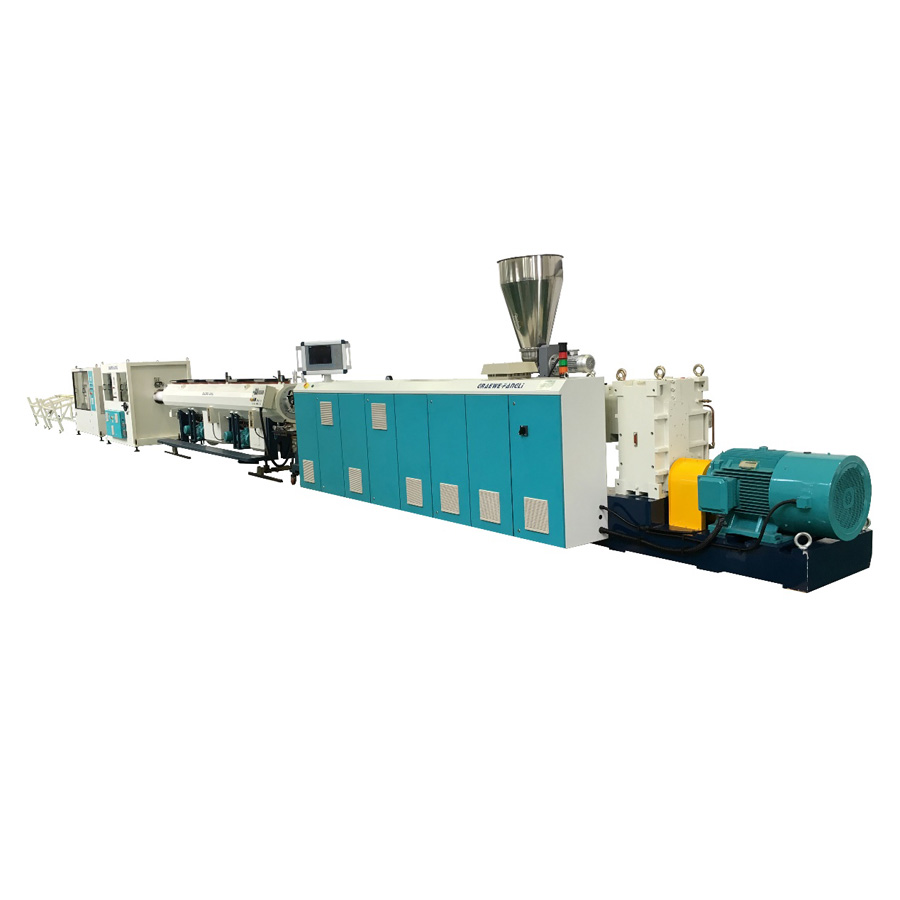- English
- Español
- Português
- русский
- Français
- 日本語
- Deutsch
- tiếng Việt
- Italiano
- Nederlands
- ภาษาไทย
- Polski
- 한국어
- Svenska
- magyar
- Malay
- বাংলা ভাষার
- Dansk
- Suomi
- हिन्दी
- Pilipino
- Türkçe
- Gaeilge
- العربية
- Indonesia
- Norsk
- تمل
- český
- ελληνικά
- український
- Javanese
- فارسی
- தமிழ்
- తెలుగు
- नेपाली
- Burmese
- български
- ລາວ
- Latine
- Қазақша
- Euskal
- Azərbaycan
- Slovenský jazyk
- Македонски
- Lietuvos
- Eesti Keel
- Română
- Slovenski
- मराठी
- Srpski језик
How to customize CPVC pipe extrusion production line
2025-05-27
Customizing a CPVC pipe extrusion line is a process that involves multiple professional technical fields. Here are some key steps and considerations to help you customize a line that suits your needs:
1. Clarify production requirements and specifications
Pipe specifications: Clarify the diameter, wall thickness, length and other specifications of the CPVC pipes you need to produce.
Production requirements: Determine the number of pipes that need to be produced per day or per hour based on production requirements.
Pipe properties: Determine the properties of CPVC pipes, such as compressive strength, temperature resistance, chemical stability, etc., in order to adjust the formula and production process.
2. Choose the right extruder
Extruder type: Usually a single-screw extruder or a twin-screw extruder is used. For the production of CPVC pipes, a twin-screw extruder can better mix resins and additives, improve material uniformity and production efficiency.
Screw design: Choose a screw design suitable for CPVC raw materials to ensure good plasticization and uniform materials. The length and diameter ratio of the screw, the speed, etc. need to be customized according to the production requirements.
3. Raw material preparation system
Raw material formula: The raw materials of CPVC pipes usually include CPVC resin, heat stabilizer, lubricant, reinforcing filler, etc. The raw material formula needs to be adjusted according to the performance requirements of the target product.
Mixing system: Customize an efficient mixing system to ensure that the raw materials can be fully and evenly mixed before entering the extruder to avoid uneven materials affecting product quality.
4. Mold design and production
Mold type: The mold design of CPVC pipes is crucial to the quality of the final product. The mold needs to accurately control the size, shape and wall thickness of the pipe, and custom molds are usually used to achieve the required specifications.
Mold material: Considering the high temperature characteristics of CPVC, the mold is usually made of highly wear-resistant and high-temperature resistant alloy steel.
Cooling system: The mold needs to be equipped with an efficient cooling system to ensure that the CPVC pipe is quickly cooled during the molding process to avoid deformation.
5. Traction system and cutting device
Traction system: Customize a suitable traction system to ensure that the traction force of the pipe is stable during the production process without breaking or loosening. Belt traction machine or roller traction machine is usually used.
Cutting system: Customize the cutting device according to the length requirements of the pipe. Common cutting methods include hot knife cutting or mechanical knife cutting. The cutting position and pipe length need to be precisely controlled to ensure the dimensional accuracy of the product.
6. Automated control system
Temperature control: The extrusion production line needs to be equipped with a precise temperature control system to control the temperature of each heating zone to ensure that the CPVC material is plasticized at an appropriate temperature.
Speed regulation: Customize a suitable frequency conversion control system according to the speed requirements of the pipe production line to adjust the speed of equipment such as the extruder and traction machine to ensure the stability of the production process.
Quality inspection: The automated system can integrate online inspection equipment, such as the outer diameter and wall thickness inspection system of the pipe, to ensure that products that meet the standards are produced.
7. Overall layout and configuration of the production line
Reasonable layout: The equipment layout of the entire production line should be reasonable to reduce the distance of raw material transmission and ensure efficient work flow. Usually, the raw material batching, extruder, mold, cooling device, traction machine, cutting machine and finished product packaging area should be closely connected.
Energy saving considerations: Select energy-saving and efficient motors and frequency conversion speed regulation systems to reduce energy consumption and improve the economy of the production line.
Automation and intelligence: You can choose to integrate automatic control systems, data acquisition systems, and remote monitoring systems to improve production efficiency and reduce human intervention.
8. Equipment suppliers and customized support
Supplier selection: Choose equipment suppliers with experience and credibility, and understand their capabilities and technical support for producing CPVC pipe production lines.
Customized support: Work closely with suppliers to ensure that the equipment can be customized according to your needs, and provide technical support and subsequent maintenance services.
9. Production line commissioning and trial production
Equipment commissioning: After the equipment is installed, it needs to be fully debugged to ensure that every link can operate normally and meet the design requirements.
Trial production: Conduct small-batch trial production to test product quality, production efficiency, and equipment stability, find problems and make adjustments to ensure stable operation of the production line.
10. After-sales service and training
Technical support: Ensure that the equipment supplier provides long-term technical support and after-sales service to solve technical problems during the production process.
Operation training: Train operators on equipment use, maintenance, and troubleshooting to ensure efficient operation of the production line.
Through these steps, you can customize an extrusion line suitable for producing CPVC pipes to meet the requirements of output and quality.




